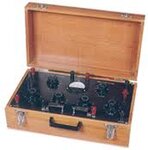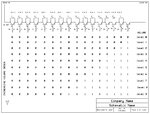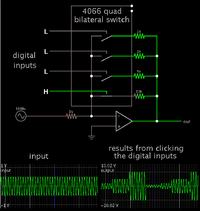rajaram04
Advanced Member level 3

- Joined
- Jun 17, 2012
- Messages
- 871
- Helped
- 6
- Reputation
- 12
- Reaction score
- 5
- Trophy points
- 1,298
- Location
- earth
- Activity points
- 7,687
Hello sir :-D
I am here again with a new idea of making a digital volume control on the basis of very basic laboratory instrument we were using named "post office box" in physics laboratory

Well coming to the point here i am posting a diagram contaning the basic circuit with the truth table below showing the triggering status so as to increase or decrease the volume (not showing all the lines)

I made it on express pcb . .
Is it a sucessfull model ? what would be the value of triggering resistor Rt approx . . ?
please reply . . thankssssss
Too tell me please if this will damage the amplifier or other musical instrument or music players unit ???
I am here again with a new idea of making a digital volume control on the basis of very basic laboratory instrument we were using named "post office box" in physics laboratory

Well coming to the point here i am posting a diagram contaning the basic circuit with the truth table below showing the triggering status so as to increase or decrease the volume (not showing all the lines)

I made it on express pcb . .
Is it a sucessfull model ? what would be the value of triggering resistor Rt approx . . ?
please reply . . thankssssss
Too tell me please if this will damage the amplifier or other musical instrument or music players unit ???

